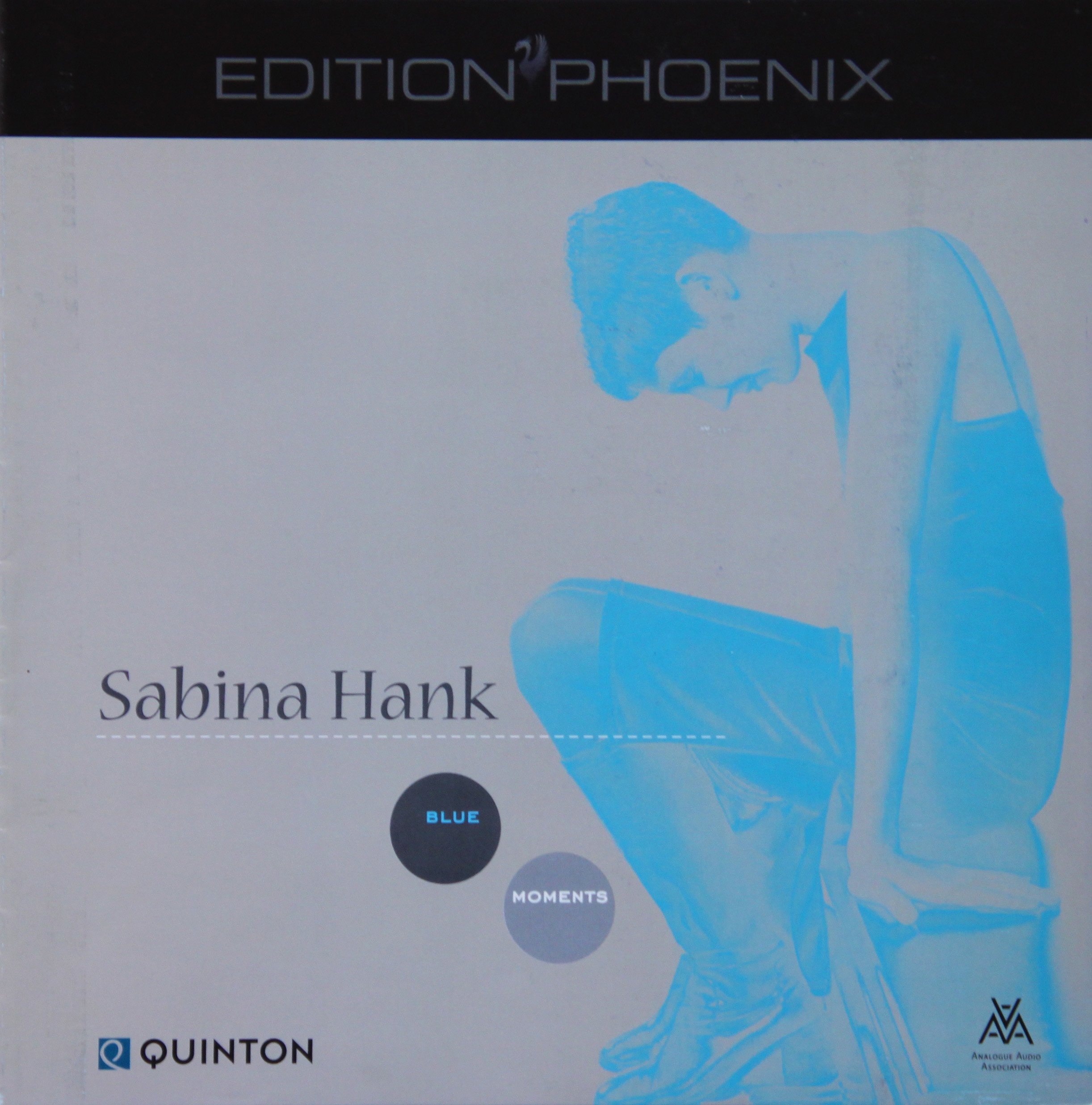Sabina Hank – Blue Moments
Publisher: Quinton, Edition Phoenix, Analogue Audio Association (AAA)
Playing time: 62 min
Specifications: half track ¼", stereo, RTM SM468, CCIR, 510 nWb/m, 38 cm/s
Reel(s): 2 standard metal reels, with stickers
Packaging: 2 standard cardboard boxes, with stickers
Inserts: 1 booklet with 8 pages
Homepage: https://www.aaanalog.de/shop
Translation of the German review:
You don't have to look across the Atlantic (from Europe) to find talent that can compete with the high standard of the world's elite of women who sing and play the piano at the same time. Nina Simone (*1933, †2003) and Shirley Horn (*1934, †2005) have certainly set standards in the genre of fluid boundaries between jazz and blues. Some representatives of the current leadership are Patricia Barber (*1956), Diana Krall (*1964), Ida Sand (*1977) and Sabina Hank (*1976). This brings me to neighboring Austria. Sabina Hank enjoyed 13 years of classical piano education at the Mozarteum in Salzburg. She completed her studies in piano and vocal jazz at the Bruckner Conservatory in Linz. Her special talent lies not only in arranging and interpreting jazz standards. She composes her own songs, which are in no way inferior to these. A mixture of these titles can be found on the album "Blue Moments"... Wait a minute: Blue? Sabina Hanks also deals with colors. Even if it may sound strange at first: she is a synesthesiologist. This means that she hears in colors. She says about it herself*: "As far as I remember, I hear in colors. Every tone, every note has a certain, own color and wave. But: None of these 12 existing tones is clearly blue. This leads to the following question for me: Why are blue notes called such? There is an answer for me: There is in between - an invisible blue. In every note, in every sound and in every chord, it is there and it is not there. Maybe you can't hear it clearly, maybe you can't define it, but you can feel it. An unprovable truth: blue moments".
The keys of the piano are sometimes stroked, sometimes hammered and everything in between is offered. The vocals come clearly and precisely from the tape, which is certainly also due to the well-done recording by Andreas Rathammer of Quinton Records. Recording a piano well has always been a challenge, which was mastered brilliantly here. The accompanying booklet says the following about this: "In order to best bring out the quiet intensity of their music and vocals, we decided to record the vocals, the piano playing and the band at the same time. Which seems obvious at first, but is rarely practiced today. The overdub recordings common today, in which the voice is recorded over the finished tracks, offer two advantages: On the one hand, one can record endlessly over the playback, and approach the right intonation and timing note by note (hence my distinction between singers and musicians!), and on the other hand, it makes miking easier, since it is always difficult to record voice and accompanying instruments at the same time, and still achieve a transparent, non-phased sound. Microphoning is especially tricky with the singer/pianist combination. You have to make sure that the crosstalk between the microphones remains as low as possible, i.e. that the piano cannot be heard in the vocal microphone and vice versa. On the other hand, crosstalk can never be completely prevented, which is why you have to make sure that this crosstalk, in which the music signal arrives in the different microphones at different times, does not lead to any audible phase problems. The only thing that helps here is patient and meticulous experimentation with different microphones and microphone positions. Thanks to this miking, we succeeded in creating a special "live" feeling of the recording, since the low crosstalk of the vocals on the piano microphones means that you can now also minimally follow the head movements of singer Sabina Hank - just close your eyes and listen..."
True: The vocals seem to be embedded in the soulfully played piano and are surrounded by drums and bass, whose sound, however, could be a good bit less biting and superficial coming from tape. Still - I like this music very much. It is this unobtrusive kind of jazz that suits any occasion: For active listening and indulging, but also as high-quality entertainment, for example, when music-interested guests are invited.
Sabina Hank: vocals, piano, composition, arrangement
Georg Breinschmid: double bass
Alexander Meik: double bass
Stephan Eppinger: drums
Translated with www.DeepL.com/Translator (free version)
Music:
Sound:
The entire content and the individual elements of the web page are the intellectual property of Claus Müller and are subject to copyright protection. They may not be copied or imitated in whole or in part by the user; this applies to texts, logos and image components. Any modification, duplication, distribution or reproduction of the website or parts thereof, in any form whatsoever, is not permitted without the prior written consent of Claus Müller.
Der gesamte Inhalt und die einzelnen Elemente dieser Webseite sind geistiges Eigentum von Claus Müller und unterliegen dem Schutz des Urheberrechts. Sie dürfen vom Nutzer weder kopiert noch im Ganzen oder in Teilen imitiert werden; dies gilt insbesondere für Texte, Logos und Bildbestandteile. Jegliche Veränderung, Vervielfältigung, Verbreitung oder Wiedergabe der Webseite sowie Teilen hiervon, gleich welcher Art, ist ohne vorherige schriftliche Zustimmung von Claus Müller nicht zulässig.



